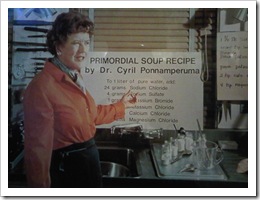
While expertise, good humor, humanity, and care are words that immediately come to mind when describing Julia Child, the iconic chef personified something else - she understood the nature of her work. She recognized the role it played, the value it brought, the actions involved in creating it, and the opportunity costs in choosing certain methodologies over others.That is why we are canonizing her as our Personal Kanban saint.Yesterday I had the good fortune to spend some time at the Smithsonian's National Museum of American History contemplating her kitchen. Where Martha Stewart’s kitchen is the epitome of OCD tidiness, Julia Child’s kitchen looks as if the instruments of her craft were shaped only slightly differently than if she’d be making furniture or refitting a 1952 Studebaker.That's because Julia Child’s kitchen was her workshop.Julia Child could have had the most cutting-edge kitchen in the world, and most likely she could have had it for free. Surely any appliance company would have paid handsomely to say they custom-fit her kitchen with their latest product line.But instead she chose to used the same range for 40 years.Her arsenal of cutlery was mismatched, "unsexy" by today's standard. Her pans hung from every available surface - from walls, doors, wherever they would fit. Each knife, each pan had its place, fitting perfectly within a designated spot or outline. It wasn't a mess, but it wasn't streamlined, either.Julia Child said things like,“I am a knife freak.”and“Life itself is the proper binge.”and“Everything in moderation, including moderation.”Her demeanor and her actions seamlessly integrated her passion for food with everything else in life. She understood her work and as such, it ceased to be work.It became life.She was organized without being compulsive. She was meticulous but retained her humor. She had little to prove, but everything to share.To the right we see, unsurprisingly, Julia Child’s Wine Kanban. Every bottle, as it ages, is tracked to the point of drinking.We have pots and pans on a visual control, knives on a visual control, wine on a visual control. For Julia, her stuff didn’t just go places, it was a marker for the nature of her work. If a 6 quart sauté pan was missing from its place on the wall, it meant it was in use.Her tools told her story.Her tools represented her creation of value.The take-away here is that visual controls are always graphic markers of how we work. The more seamlessly we can integrate visual controls into how we actually work and live, the less time they take to maintain. Especially for specific projects, where we are already focused and updating, a literal kanban may take more time than is necessary – creating elegant visual controls that stem from the actual activity can really help give the task an internal coherence and make it easier.Take a page from Julia’s cookbook and examine your work. What might your tools be saying to you?




